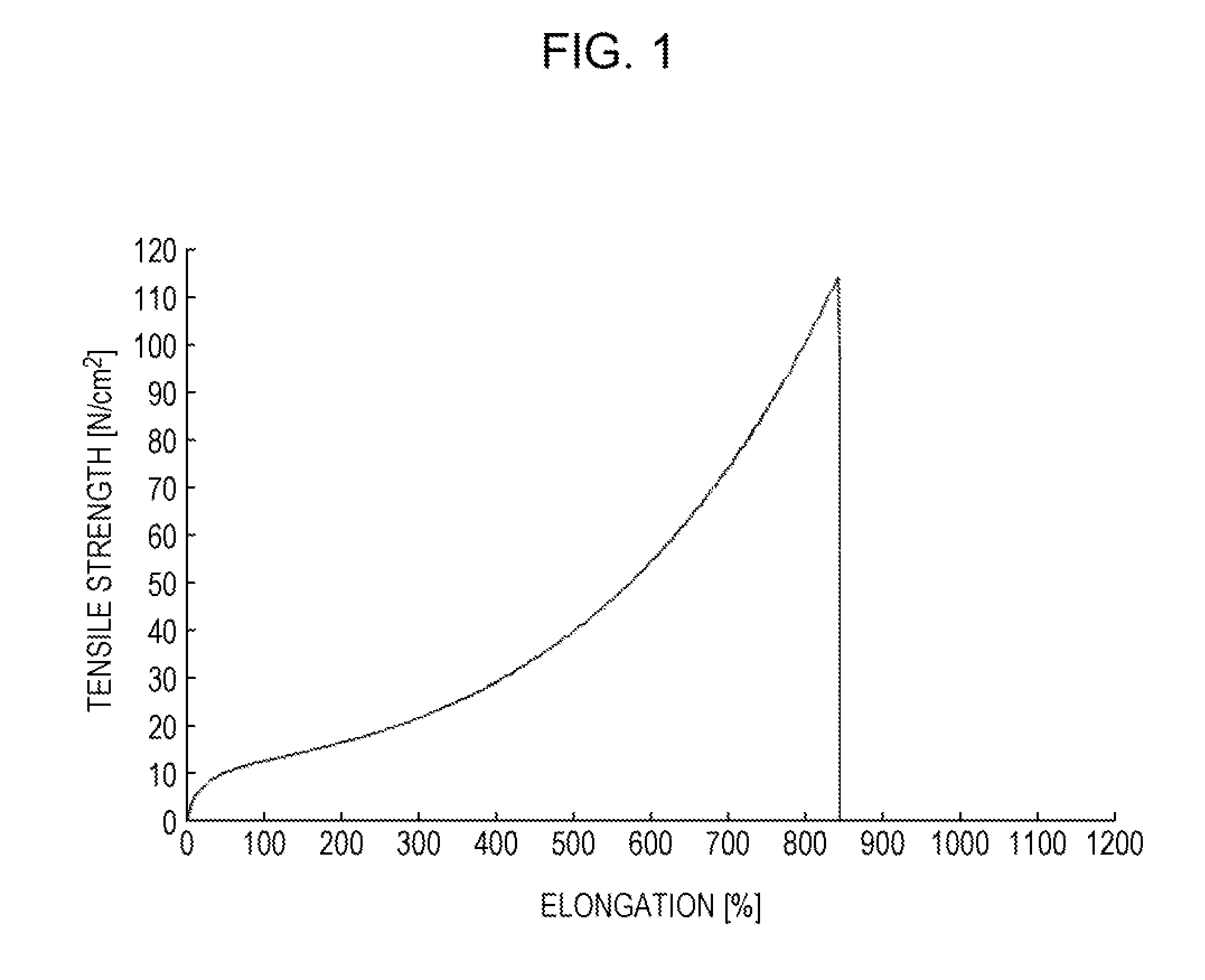Adhesive sheet and electronic device
- Summary
- Abstract
- Description
- Claims
- Application Information
AI Technical Summary
Benefits of technology
Problems solved by technology
Method used
Image
Examples
preparation example 1
Method for Producing Acrylic Polymer (A-1)
[0158]A reaction vessel equipped with a stirrer, a reflux condenser, a nitrogen introduction tube, and a thermometer was charged with 80.94 parts by mass of n-butyl acrylate, 5 parts by mass of 2-ethylhexyl acrylate, 10 parts by mass of cyclohexyl acrylate, 4 parts by mass of acrylic acid, 0.06 parts by mass of 4-hydroxybutyl acrylate, and 200 parts by mass of ethyl acetate, and the temperature of the mixture was increased to 72° C. under stirring while nitrogen was blown into the vessel.
[0159]Next, 2 parts by mass (solid content: 0.1% by mass) of a solution of 2,2′-azobis(2-methylbutyronitrile) in ethyl acetate prepared in advance was added to the above-prepared mixture, and the resulting mixture was held at 72° C. for 4 hours under stirring and then held at 75° C. for 5 hours.
[0160]Next, the above mixture was diluted with 98 parts by mass of ethyl acetate and filtrated using a 200-mesh wire net to thereby obtain an acrylic polymer (A-1) so...
preparation example 2
Method for Producing Acrylic Polymer (A-2)
[0172]An acrylic polymer (A-2) solution (non-volatile content: 40% by mass) having a weight average molecular weight of 1,640,000 was obtained by the same method as in Preparation Example 1 except that the amount of 4-hydroxybutyl acrylate used was changed from 0.06 parts by mass to 0.02 parts by mass and the amount of n-butyl acrylate used was changed from 80.94 parts by mass to 80.98 parts by mass.
preparation example 3
Method for Producing Acrylic Polymer (A-3)
[0173]An acrylic polymer (A-3) solution (non-volatile content: 40% by mass) having a weight average molecular weight of 1,620,000 was obtained by the same method as in Preparation Example 1 except that the amount of 4-hydroxybutyl acrylate used was changed from 0.06 parts by mass to 0.1 parts by mass and the amount of n-butyl acrylate used was changed from 80.94 parts by mass to 80.9 parts by mass.
PUM
| Property | Measurement | Unit |
|---|---|---|
| Temperature | aaaaa | aaaaa |
| Fraction | aaaaa | aaaaa |
| Percent by mass | aaaaa | aaaaa |
Abstract
Description
Claims
Application Information
 Login to View More
Login to View More - Generate Ideas
- Intellectual Property
- Life Sciences
- Materials
- Tech Scout
- Unparalleled Data Quality
- Higher Quality Content
- 60% Fewer Hallucinations
Browse by: Latest US Patents, China's latest patents, Technical Efficacy Thesaurus, Application Domain, Technology Topic, Popular Technical Reports.
© 2025 PatSnap. All rights reserved.Legal|Privacy policy|Modern Slavery Act Transparency Statement|Sitemap|About US| Contact US: help@patsnap.com

